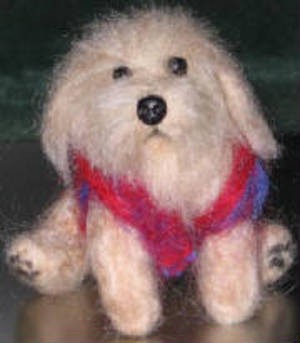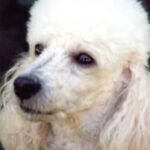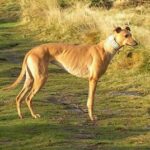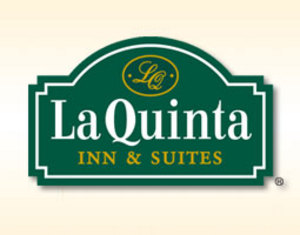Contrary to popular belief, Poodles do shed, Bichons shed, Malteses shed, all dog breeds shed. There are NO shed free dogs. Many falsely assume the so called non-shedding or low shed breeds of dog to be low maintenance when often, it takes much more time to care for the special coat of these usually small dogs than it does to maintain the coat of many of the larger breeds who shed a lot more. The ‘non-shed’ breeds are also often assumed to be good for people with allergies, when it’s not the hairs that affect people, it’s the dander. Even worse, allergies, along with not realizing the time or cost it takes to care for a pet, are very common reasons pets end up in shelters. When looking for a dog, don’t be fooled by the no-shed or hypoallergenic labels which may lead you to bring home a dog, only to realize you can’t keep it.
While some dog breeds may be referred to as “low shed”, “non-shed”, “shed-less”, “shed-free”, or “no shed”, there are actually no shed-free dogs. The definition of shed is used loosely, to describe how certain breeds of dog appear to shed less, as you may find fewer hairs in your carpet, on your clothes, and on the furniture; but that doesn’t mean the dog isn’t losing hairs. The terms are often used for curly coated breeds like Poodles and Bichons, or breeds with a coat of very fine, thin hairs, including Yorkshire Terriers and Malteses. The illusion of shedding few to no hairs is because loose hairs are trapped in the coat, and must be brushed out daily to prevent matting from all the trapped sheddings as well as to prevent all other hairs from tangling and knotting.
While the supposedly low shed or shed free dogs do shed hairs, they do not have the thick double coat found on some other breeds and do shed less than those dogs. The thick undercoat of a double coated dog sheds a lot, especially two times a year when the coat is growing thicker for colder months and even more when exchanging the extra thick coat for the finer, thinner summer coat. However, the area you live in may affect your dog’s shedding and some dogs may shed more evenly throughout the year. The shedding of the double coat, that is, when the fur actually leaves the dog, makes it easier to care for the coat and to some extent prevents mats from forming. Regular brushing is still required to fully prevent mats, how often depends on the breed, and need can vary somewhat between individual dogs. There are also some double coated breeds that mat easily, such as Chows and Pomeranians, who have extra thick undercoats. Most medium and long coated breeds, like Golden Retrievers and Border Collies, can mat more easily in the areas with finer hairs, particularly behind the ears and under the armpits, so be sure to check all areas when brushing a dog.
As for the single coated breeds, ‘shed free’ often means more elaborate grooming compared with the typical double coated breeds, like German Shepherds and Akitas who shed a lot. It’s much easier to prevent mats when some hairs remove themselves and a lot more hairs can be removed by gentle brushing or a good wash, especially when conditioner is used. In single coated breeds, like Poodles, Bichon Frises, Yorkies, and Malteses, the fine hairs tangle much easier and loose hairs trapped in the coat must be removed with more full frequent full coat brushing. If a dog’s coat ever gets to the point of matting, it’s almost always impossible to brush the coat out and it’s much kinder to shave the dog than to pull on the already sensitive skin. ‘Non-shed’ single coated dogs also tend to grow very long coats, compared with double coated dogs who’s coat tends to stay at a more stable length. Long fur tangles easily and many owners choose to keep their dog’s coat clipped short to make the coat easier to care for.
There are some breeds with a fairly self sustaining and comparatively easier to care for coat; these include Miniature Pinschers, Dobermans, Chihuahuas, and Labs. While they tend to have very short hair, all those breeds do still shed noticeably on furniture, clothes, and carpet, like the double coated breeds. It’s not possible to completely prevent a dog from shedding, but it is possible to control where a lot of the hair goes with regular brushing and grooming.
Remember also, that over washing can dry the skin and cause flaking and more shedding; most dogs shouldn’t be washed more than once a month. Very young puppies should only be washed by the mother dog or when absolutely necessary, such as if they have soiled themselves and the mother is not there to clean them. To clean young puppies, use only special alcohol free wipes, or another alcohol-free product specifically for puppies that age. Over washing a dog can cause dry skin, and even scabbing in puppies due to their sensitive skin. At any age, in any dog, dry skin means flaking, which means more dander, a greater affecter of allergies than the dog’s hair. While there are moisturizers for adult dogs (be sure to get an alcohol free kind as alcohol dries the skin) another bath will not wash out flakes, it can dry the skin and make more. In addition, individual dogs vary in the allergens they produce and people vary in sensitivity. The only way to tell how a certain pet might affect allergies, is for all members of the family to spend time around the specific dog (not just the breed) before bringing it home. This will help avoid the sad, and very frequent, situation where a beloved pet is brought to an animal shelter due to allergies of the owner or someone else in the family.
Another important factor in caring for a dog’s coat is diet. A healthy diet with good nutrition is needed to keep a dog’s coat in good condition. Healthy dogs will shed less and have better skin as well as overall health.
When looking for a dog, don’t just look for what may keep your couch cleaner, or what won’t clog the vacuum; take into consideration what it takes to keep the dog well groomed as well as everything else it takes to care for a happy, healthy pet.





